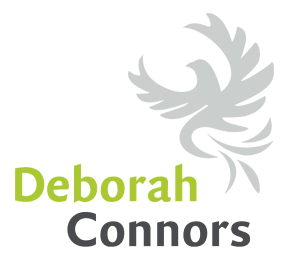
13 Apr How to Use a Through-Line Approach for Better Workplace Results
I skied for 20 years before I learned this concept that made all the difference! I took a lesson where the instructor talked to us about the “fall-line” of the mountain. This is the direction water will flow when it is free to run. When you stand at the top of a mogul run, you can visualize what would happen if you poured over a bucket of water and watched where it went. There can be any number of paths, but they all follow this fall line.
When you miss the fall line as a skier you feel as though you are fighting against the mountain, but when you get it right, gravity helps the skis turn and it’s magic!
From the top of the mountain you won’t see that line all the way to the bottom – you only see the beginning of it and you can pick your first three turns. It’s in mid-course, in real time as you’re flying down the mountain that you pick the next three, and the then next. Sometimes (often) I’ll miss a turn, and then I’m course correcting on the fly but always looking for that path of least resistance – that fall line to follow.
The Through-Line Approach
In acting and writing, there is something called the “through-line” which is a similar concept. The through-line is that thread or theme that connects the thoughts and concepts to keep your listener or reader with you. While the speaker or author may tell many stories or explain different concepts, they always come back to the through-line, which brings the listener or reader back to the theme or the general message they are trying to convey.
I use this through-line approach in my work with organizations and suggest that leaders adopt this practice when trying to create positive change. It helps immensely to have a vision to work towards (e.g. What do we want our culture to be?) but once we have that, then the next question is what are three turns I could take that will move us toward that vision?
As a skier, I know what my vision is – to get to the bottom of the run of course! But after that, my focus needs to be on finding the through-line through the moguls. What are my first three turns? If my focus is on the bottom of the hill I’m quite likely to tumble rather than ski down because I’m not focused on what is directly in front of me.
I need to have a laser focus on what my skis are doing and if (when) I miss that one turn because it’s more icy or sticky or powdery than I thought, I need to immediately adjust to the new reality and pick the turn that will get me back on that fall line of the mountain.
We’re a “Check-list” Society
It may seem unnerving not to know what will come after those first three turns, but that’s how life is. Dr. Robert Quinn describes our society as having a ‘check-list’ mentality. We want to know all the steps; we want to check off the boxes. We are more comfortable with cookie-cutter approaches, and following best practices than we are with finding the possibilities and trusting the emergent process. Checklists and packaged programs are certainly the easiest to implement, but they are the least likely to be successful.
When we are working toward a more positive or healthy culture at work, it is practices, not programs that create change. It is the daily leadership practices that you develop that will shift things. Think of these practices as turns on a mountain.
Of the many positive practices you’re aware of that can disrupt downward spirals and help to create a better place to work, which one will you start with? Just pick one, two or three that you want to try and be open to the possibilities of what will emerge from developing these new habits.
What are your first three turns?
Maybe your first turn is to start with something personal like beginning a gratitude practice. Maybe you commit to doing this for 30 days and observing what happens. Maybe your next turn is to incorporate this into how you carry out meetings with your team. You might decide to start each meeting with a round of gratitude, asking each person to simply mention something they are grateful for. You’ll likely find that this sets a different tone for your meetings.
A different approach? Yes, and I think this provides some hope for those who don’t know where to begin with positive change. If shifting culture is about practices, I can start developing a new practice today. I can introduce a new practice to my team tomorrow. As I observe how this impacts me, and those around me, I can pick my next three turns and course-correct as I go knowing that there is no way to know what the next three turns are until I get there. Each practice can flow from the next, trusting the emergent process, following that through-line to the vision versus fighting against the mountain.
I can shift culture – one practice, one person at a time.
I can impact positive change.
That’s powerful.

